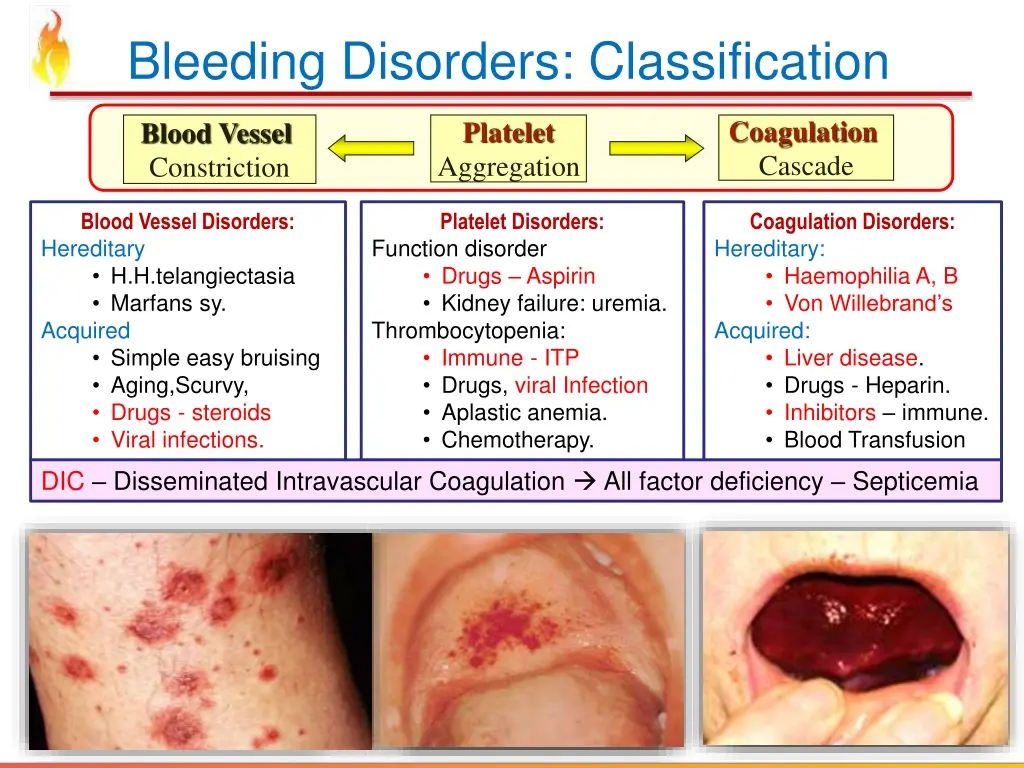Can Bleeding Disorders be Cured?
Sometimes
Management involves addressing the underlying cause and may include preventive measures and treatment of bleeding episodes; outcomes depend on the specific bleeding disorder and its severity

What is Bleeding Disorders?
Bleeding disorders, such as hemophilia and von Willebrand disease, involve difficulties with blood clotting, leading to prolonged bleeding. Treatment includes clotting factor replacement, medications, and supportive care.

Clinical Aspects

Characteristics
Group of conditions characterized by difficulty in blood clotting

Symptoms
Excessive bleeding, easy bruising, prolonged bleeding after injury

Diagnosis
Coagulation assays, genetic testing

Prognosis
Variable, contingent on the specific bleeding disorder

Complications
Hemorrhage, joint damage
Etiology and Treatment

Causes
Hemophilia, von Willebrand disease, platelet disorders, liver disease, medications

Treatments
Treatment depends on the specific disorder and may include clotting factor replacement, medications, or, in severe cases, blood transfusions or other interventions

Prevention
Treatment depends on the specific disorder and may include clotting factor replacement, medications, or, in severe cases, blood transfusions or other interventions
Public Health and Patient Perspectives

Epidemiology
Hemophilia, more prevalent in males, but various bleeding disorders exist

Patient Perspectives
Lifelong management necessitates consistent monitoring and treatment
This information serves as a general overview and does not constitute professional medical advice. Always consult with healthcare providers for accurate and personalized insights regarding your health.
Share: